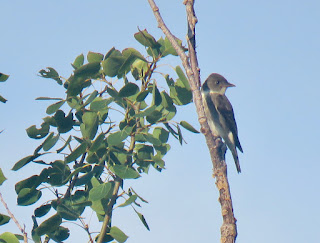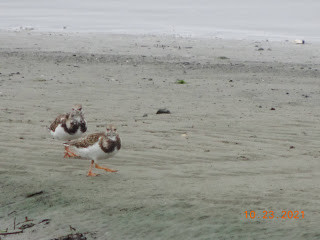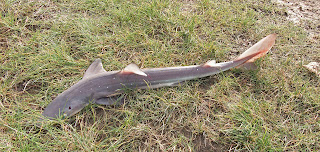NATURE
MONCTON NATURE INFORMATION LINE, Oct. 24, 2021 (Sunday)
To respond by e-mail, please address your message to the information line editor, nelsonpoirier435@gmail.com .
Please
advise the editor at nelsonpoirier435@gmail.com
if any errors are noted in wording or photo labelling.
For more information on Nature Moncton, check the website at www.naturemoncton.com .
Edited by:
Nelson Poirier nelsonpoirier435@gmail.com
**After hearing and witnessing two large flocks of
Canada Geese fly over his Lower Mountain Road house towards the west, the unmistakable sound of Sandhill Cranes bugling caught Brian Coyle’s attention.
They were in a flock of 10, heading over a small forest towards a corn field. He
waited for a half hour before venturing out. Long story short, they saw him
before Brian saw them and after one bugle they took flight. They flew off to
the west, then south, and then incredibly, back towards the field. He crouched
down motionless in his full camo gear, not showing his face, hoping that they
would land again. The flock flew right over him at least 10 times, bugling all
the while. He assumed they were trying to determine if he was a threat. Alas,
they finally left the field and headed east but will be checking in the days to
come for more observations. Brian was able to get one documentary of 10
Sandhill Cranes in flight.
**Leon Gagnon shares some
photos he took at Wilson Point on Miscou Island this summer. He located a nest of
Olive-sided Flycatchers and got a photo of an adult. He had Semipalmated
Plovers visit the yard of his summer home and got a photo of an immature Great
Blue Heron nicely posing.
There was a burn over at
Wilson point in 2017. Leon sends a photo of the rich regeneration taking place
in 2021.
**On Friday, going for her daily walk, Yolande LeBlanc parked behind the Memramcook arena. When she left the car, she could hear them; there were ‘many’ European Starlings in the trees in front of the Memramcook Institute and Monument Lefbevre. Yolande walked toward the sound and they took flight. There were approximately 3000 birds. They flew around and around, then landed again in some other trees. Like many of us, Yolande is not a starling fan but that was a mesmerizing murmuration! She had seen them before in the area like that.
On
Saturday, there were lots around, but not in big groups. She hopes they don't
find her yard!
**On Friday
Yvette Richard had 7 Eastern Bluebirds show up again in her Cocagne yard
checking out real estate potential for next season. They stayed for a couple of
hours then gone.
This scenario is becoming commonplace as the Eastern Bluebird population swells and can continue right into November.
**Bob Blake
comments the
Mountain Ash trees are full of American Robins now around his Second
North River home eating the very heavy crop of berries. The branches are
hanging low with berries this year as many are noting.
I was
in the Cape Enrage area on Saturday and hundreds of American Robins were flying
between the Mountain Ash trees feeding heavily. With such a bumper crop, many
robins will have little reason to leave us this winter.
**Aldo
Dorio continues to photograph the late-season shorebirds at Hay Island. On
Saturday, he took note of Ruddy Turnstones and Dunlin.
**Lori
Bateman cleaned the 5 Nature Moncton bird boxes she has. Three were used by
Tree Swallows and one she thinks was used by Eastern bluebirds, and one had a
partial nest that had been abandoned.
There was
no sign of dead birds in any; the nest location is 5 km from Shediac Bay as the
gull flies, in open hay field.
She is
grateful to have the boxes, thanking Fred Richards carpenter shop for making
them available to Nature Moncton to make them available to Nature Moncton
members free of charge.
**While fishing near Cape enrage on Saturday, I was surprised a Spiny Dogfish (shark) took my bait to give a nice chance to observe this shark up close. They are very common in the Bay of Fundy but this is the first chance I have had for a close observation. They grow to a maximum of approximately 20 pounds but this specimen was under 5 pounds. They get the name due to 2 very sharp spines, one anterior to each dorsal fin at the point of fin origin they use to deter predators. They have a line of white spots along the back as the photo shows. They pose no danger to humans feeding on a wide array of sea creatures. Their emerald for green eye is striking.
Nelson Poirier
Nature Moncton














